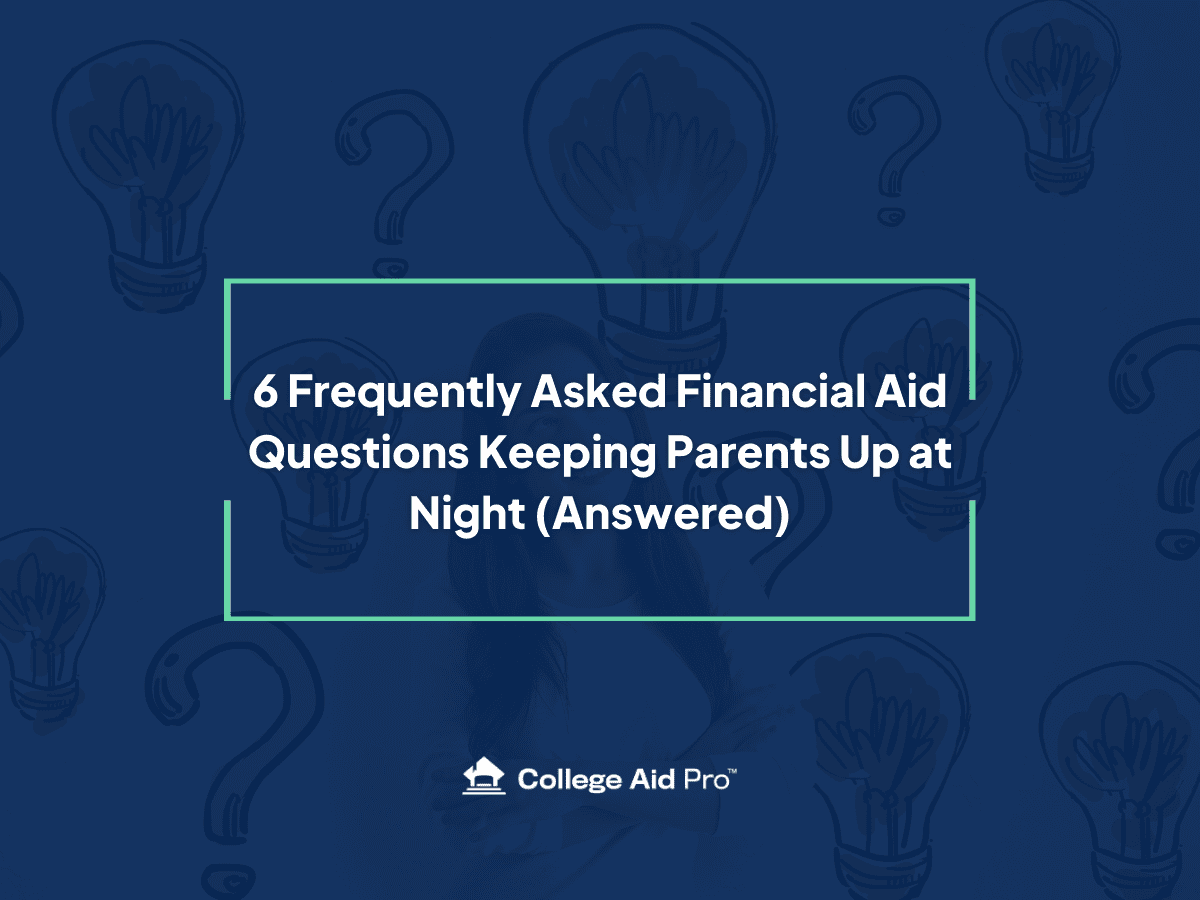Athletic scholarships for college are often misunderstood and assumed to be more available than they are. The process to find these and market your athlete appropriately can be a confusing and overwhelming process.
I want to start by providing some general considerations, then talk about the main steps in the process, and finally provide some links to help you get started with finding athletic scholarships and the overall college recruiting process.
Athletic Scholarships – General Key Terms and Considerations
Only Some Schools Can Offer Athletic Scholarships
Only Division 1, Division 2 and NAIA 4-year schools, and NJCAA 2-year schools give athletic scholarships. Division 3 schools cannot give athletic scholarships. Athletes at Division 3 schools often rely on merit scholarships or need-based aid given by the school to make these schools more affordable.
Not all Division 1 schools give athletic scholarships – Ivy League schools cannot give any athletic scholarships. There are also other Division 1 schools that are not funded at all by the NCAA for any athletic scholarships, or not funded at all in certain sports.
What Are Headcount Sports And How Do They Factor Into Athletic Scholarships?
Division 1 fully-funded programs in “headcount sports” can only offer full-ride athletic scholarships. Headcount sports, according to NCSA Sports, are defined as “sports that generally bring revenues to the school.”
There are 2 headcount sports for men: football and basketball, and 4 for women: basketball, volleyball, tennis, and gymnastics. In these D1 sports, it’s a full-ride scholarship or nothing. For D1 headcount sports, there is a maximum number of athletes on scholarship allowed per team and each of these must be a full-ride scholarship if the program is fully funded aka allowed to provide the maximum amount of scholarship money per the NCAA. If the program is not fully funded, it can choose how to disperse the scholarship money up to the maximum number of athletes on scholarship.
Athletic Scholarships For Equivalency Sports
All other D1 sports not that aren’t headcount sports, D2, NAIA, and NJCAA sports are called “equivalency sports.”There is still a maximum number of “full” scholarships for equivalency sports, but these scholarships can be divided out between athletes.
For example, the maximum number of scholarships allowed in Division 1 & Division 2 men’s tennis is 4.5. Instead of only having 4 tennis players on full scholarship and one player on half scholarship, the coaches can divide out the equivalent of 4.5 scholarships among as many players as they want to.
When To Start The Athletic Scholarship And Recruitment Process?
The higher the level your student wants to play (D1, D2), the earlier you should start the athletic recruiting process. The same is true for how competitive the sport is. The more competitive the sport is at the collegiate level, the earlier you should start the athletic recruiting process.
In general, this would mean that you should start the process earlier for headcount sports (in fully-funded D1 programs) since students are vying for full-ride athletic scholarships. Beyond that, you will want to look at the general information for athletic recruiting in the sport to see when the process usually starts.
Do Athletic Scholarships Cover All 4 (Or 5) Years?
Athletic scholarships only cover one year at a time and most are not guaranteed to be renewed. For example, in 2015, the power 5 D1 conferences (Big 10, Big 12, PAC 12, SEC, and ACC), plus the University of Notre Dame, voted to adopt a rule that keeps their student athletes from having their athletic scholarships taken away for any athletic reason. Other D1 schools and conferences can choose to follow this rule but are not required to do so. It is common for a freshman to be recruited as a walk-on (no scholarship) with the “promise” of a scholarship in later years or to be offered a scholarship that will cover less than 4 years. This is often how headcount sports attract more players than their allotted number of scholarships – they move the scholarships around from year to year among players who weren’t their “top” recruits.
A Dose Of Reality
Only about 2% of all high school athletes are awarded scholarships to play in college and only about 1% of all college athletes receive full-ride scholarships. This means your child will still very likely need to apply for financial aid.
Your child could be a very talented athlete. But unless your student is a natural “phenom” that coaches will seek out on their own due to stats and press coverage, your student is going to need to do the work to get recruited.
Finding Athletic Scholarships & Getting Recruited
In order to get athletic scholarship offers, your student needs to get recruited. Here are the overall steps recommended in order to get recruited.
Must Do:
- Research schools that offer your student’s sport and may be a good academic fit – major college search sites like collegedata.com and the College Board’s Big Future site allow you to search schools by athletics.
- Have your student contact college coaches – Start with an introductory email. I have included resources to help with this below. It’s not that hard to find coach emails on the school’s website and/or athletic website. It’s worth the time and effort to track down the specific coaches and send them personalized emails.
- Get video footage of your child competing – There are highlight videos and skill videos. Highlight videos tend to be most important because these are game/competition footage that will allow college coaches to get an initial look at your student. You will want to post the videos and have your student send a link when emailing coaches.
- Collect your child’s stats – These will be needed for filling out the college’s online recruiting questionnaires, potentially inserting in the highlight video and filling out any free recruiting profiles
- Have your student register with the NCAA Eligibility Center if interested in D1 or D2 sports.
- If interested in D1 or D2 athletics, make sure you and your student understand the academic standards that must be met in order to be eligible to compete (you can find these through the NCAA Eligibility Center guide linked in the resources section below)
- Have your student fill out online recruiting questionnaires for schools they are interested in – These can usually be found pretty easily by going to the school’s athletics website, selecting your student’s sport, and looking for a link to the recruiting questionnaire
- Have an official ACT/SAT score report sent to the NCAA Eligibility Center by end of Junior year of high school (if looking to get recruited in D1 or D2)
- Have your student’s high school send their official transcript to the NCAA Eligibility Center by end of Junior year of high school (if looking to get recruited in D1 or D2)
- If your student competes with a club team and the club offers recruiting services included in the club fees, take full advantage of this opportunity to help identify schools interested in your student athlete – they are not going to do all the work for you but can be very helpful in making the right connections
- Make sure you understand the rules for contact with coaches in D1, D2, and NAIA sports.
Optional:
- FREE online recruiting profiles through services like NCSA, CaptainU, SportsRecruits, BeRecruited, etc. – I do not recommend paying for any services offered through these sites, but it can be helpful to have a profile out there with a link to your student’s highlight video in case a coach is searching for potential recruits on these sites
- College sports camps, recruiting combines, and recruiting showcases – While not absolutely necessary, these are recommended in order for your student to get visibility from schools they are interested in. There is a cost involved so it’s best to be selective and attend camps at the schools that your student is most interested in and/or combines and showcases that have the best coach/recruiter attendance.
- Utilizing a local recruiting expert who knows many college coaches and has seen your student compete – There are some opportunities to hire someone local and reputable to help with your student’s recruiting. Make sure this person has a long track record of success, will watch your student compete (multiple times), and will be contacting college coaches to talk up your player as someone to watch (this would be similar to a club’s recruiting coordinator, but someone you are paying extra for). There’s a huge difference between this type of contact and paying for a major online recruiting service. I’m talking about someone who has a standing reputation in the sport, will get to know your student, and has ongoing relationships with college coaches.
Not Necessary:
- Paying for athletic recruiting services through a large site like NCSA, CaptainU, or others – These services will try to convince you that you need them in order for your student to get recruited. However, experts and coaches will tell you that they don’t put much stock in these big and impersonal sites. They want to hear directly from students or from their coaches or club recruiting directors who know the student’s abilities firsthand.
- Spending money on expensive video creation services – College coaches will do just fine with the video you shoot yourself as long as it is clear and steady and it is clear which athlete is yours. Also, make sure to take out the audio. Coaches don’t need to hear the cheering and/or parent commentary.
Don’t Do:
- Parents, don’t contact coaches for your student – Coaches expect the students to do the contacting themselves. The only other people coaches want to/expect to hear from are your athlete’s coaches, recruiting directors or any private recruiting experts you employ (see the last bullet under Optional for a description of the type of recruiting experts that you might want to consider and when they may be helpful).
- Don’t send mass emails through a recruiting platform – Recruiting platforms like SportsRecruits, CaptainU, and others have the capability to do mass-emailing while automatically replacing the school name and a few other details. I’m not saying this can never be done. However, most coaches can tell when an email is generic. They would much prefer to get an email from your student-athlete that speaks specifically to why they are interested in the school and the team. This will make the coach much more likely to pay attention and consider whether your student may fit with their program.
Helpful Resources For Athletic Scholarships
NCAA Eligibility Center Guide for the College-Bound Student-Athlete
How to Email College Coaches (and Sample Emails)
Sample Letters from Athletes to College Coaches
How to Build and Share an Effective Recruiting Video
A Quick Parent Guide to Getting Quality Video for a Highlight Film
The college recruiting process is an exciting journey! These resources will help you get started. Make sure you and your student both have a realistic view of what division he or she is well suited for, both based on athletic talent and the demands involved. The NCAA Eligibility Center Guide linked above will help you understand the demands.
If you don’t know where your student’s talent would put them, get an evaluation from a trusted source. It’s best to start with school and club coaches and athletic trainers – make sure they are people who have seen your student compete in person (and hopefully know your student’s personality and how they respond to coaching).
Good luck!
Not Sure If An Athletic Scholarship Will Pan Out for your Student?
Paying for college can be expensive. And having the talk about financial aid, scholarships, and other ways of paying for your child’s degree can feel daunting. We’ve taken the stress out of it and written an e-book to address just this. Our “Having the College Money Talk” guides you through college planning with a positive and honest outlook.
Get the e-book today and learn how to avoid tons of debt for your college-bound student.



